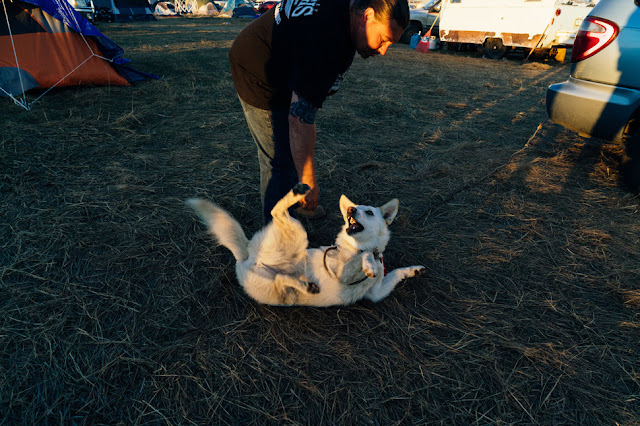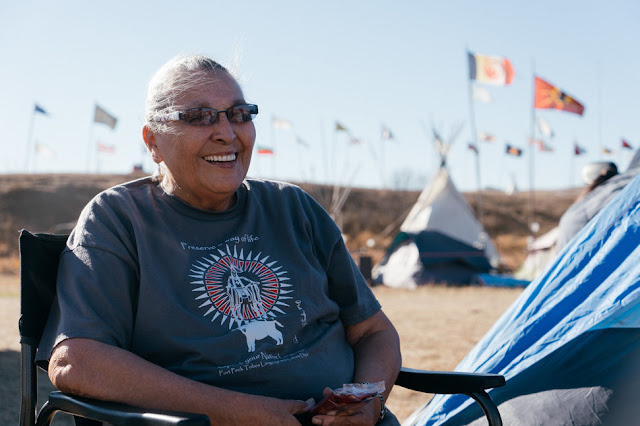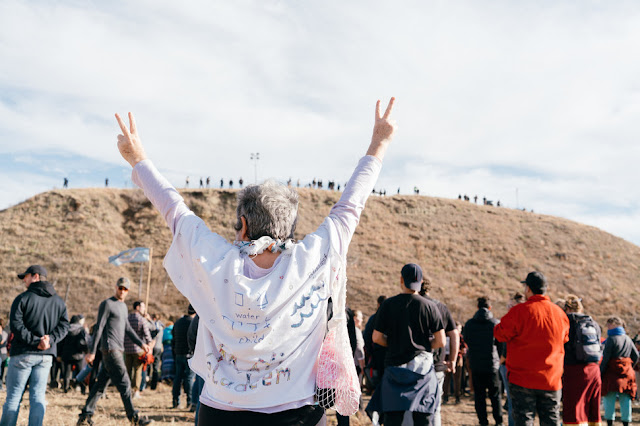Photographers have captured beautiful and mesmerizing images in the last three months as they’ve covered the Standing Rock “water protectors.
” The Dakota Access pipeline, funded by the Energy Transfer Partners corporation, would transport up to 570,000 tons of crude oil per day along a 1,172-mile route from the Bakken oil fields of North Dakota through South Dakota, Iowa, and Illinois.
If completed, its path would cut through grounds sacred to the Standing Rock Sioux tribe. It would travel twice underneath the Missouri River, which the Lakota and Dakota people of the Standing Rock Sioux reservation depend on for drinking water, along with 17 million other people throughout the country.
North American tribes and nations united in an effort to protect water and land. Together they would build a resistance movement rooted in nonviolence and community that, nearly eight months later, shows no signs of backing down, even in the face of mounting violence against it.
The camp is getting bigger every day: 300 Indigenous nations are now on site, people of all ages. A school has opened: the children do not take part in protest actions, but attend prayers.
They have desecrated ancestor’s burials and prayer sites and dug up remains by going through sacred sites. They are destroying Mother Earth: what could happen if the pipeline breaks underneath the Missouri river and leak will affect eighteen million people, animal, and natural life.
Extracting oil will harm the food, the plants, the weather.
Source
” The Dakota Access pipeline, funded by the Energy Transfer Partners corporation, would transport up to 570,000 tons of crude oil per day along a 1,172-mile route from the Bakken oil fields of North Dakota through South Dakota, Iowa, and Illinois.
If completed, its path would cut through grounds sacred to the Standing Rock Sioux tribe. It would travel twice underneath the Missouri River, which the Lakota and Dakota people of the Standing Rock Sioux reservation depend on for drinking water, along with 17 million other people throughout the country.
North American tribes and nations united in an effort to protect water and land. Together they would build a resistance movement rooted in nonviolence and community that, nearly eight months later, shows no signs of backing down, even in the face of mounting violence against it.
The camp is getting bigger every day: 300 Indigenous nations are now on site, people of all ages. A school has opened: the children do not take part in protest actions, but attend prayers.
They have desecrated ancestor’s burials and prayer sites and dug up remains by going through sacred sites. They are destroying Mother Earth: what could happen if the pipeline breaks underneath the Missouri river and leak will affect eighteen million people, animal, and natural life.
Extracting oil will harm the food, the plants, the weather.
Source
This flag represents one of hundreds of tribes who have come together in a historic gathering at Standing Rock to stand in solidarity against the Dakota Access Pipeline.
Keytha Fixico traveled from Arizona to volunteer at Standing Rock and protect people on the front line.
Dogs or “Sunka” hold a sacred place in Lakota tradition and are a joyful presence in camp.
An Elder looks on during the morning prayers and announcements that start each day at the Oceti Sakowin, the largest camp at Standing Rock.
A camp elder travels with her daughter, retelling the history of the Lakota people
Photographed by Alessandra Sanguinetti
Photographed by Alessandra Sanguinetti
Photographed by Alessandra Sanguinetti
VIDEO



















Amazing! beautiful collection.